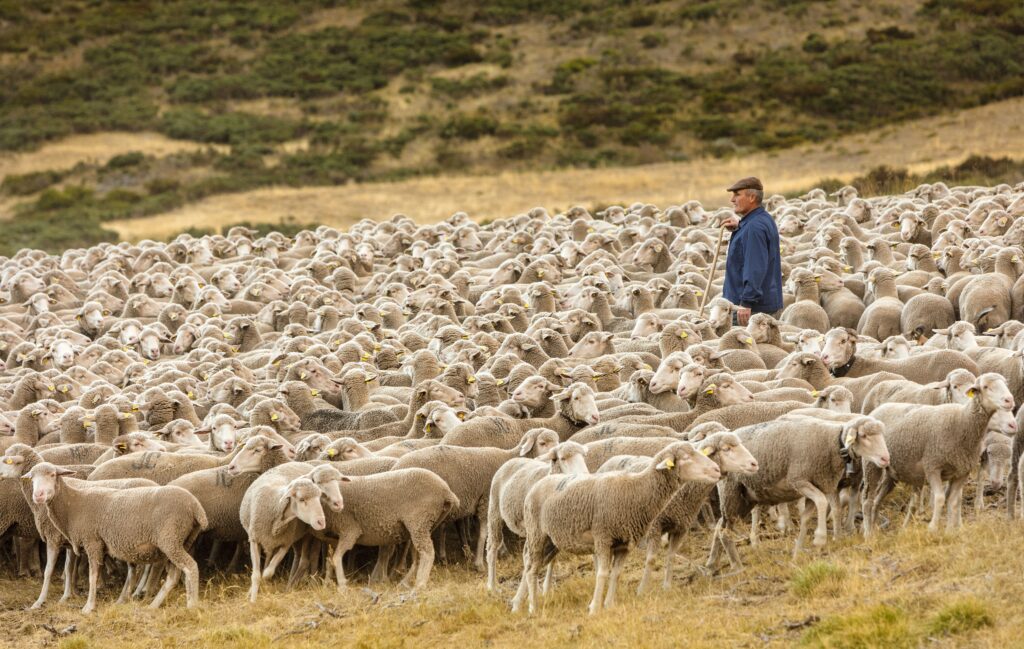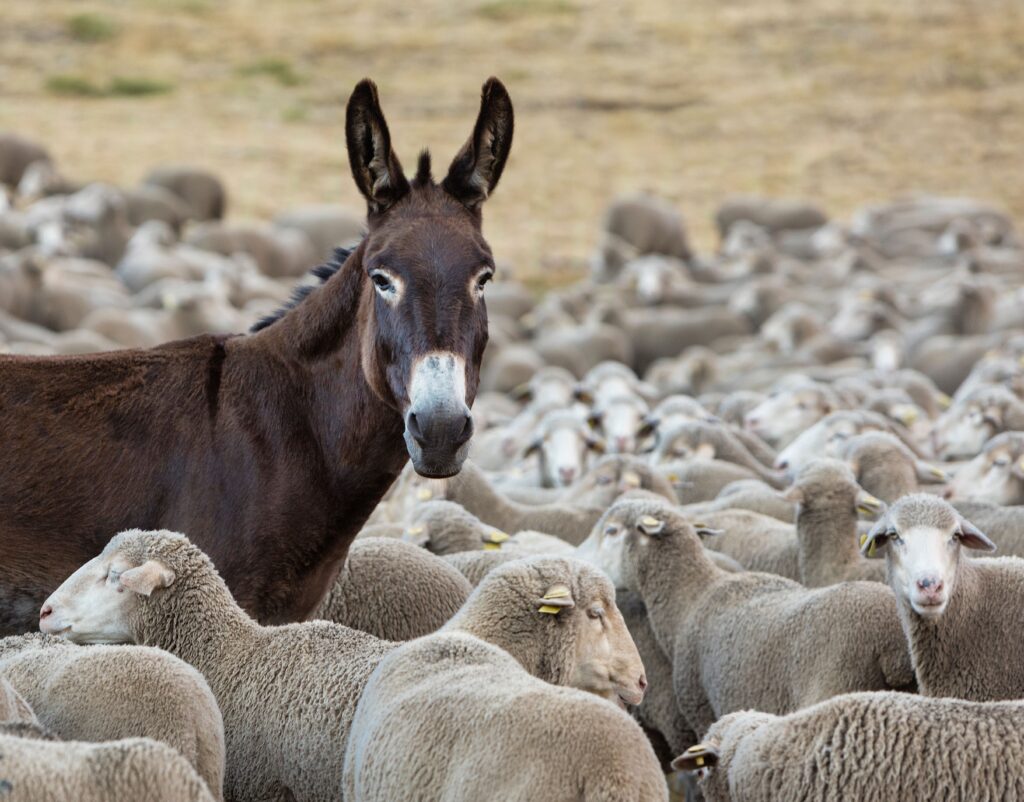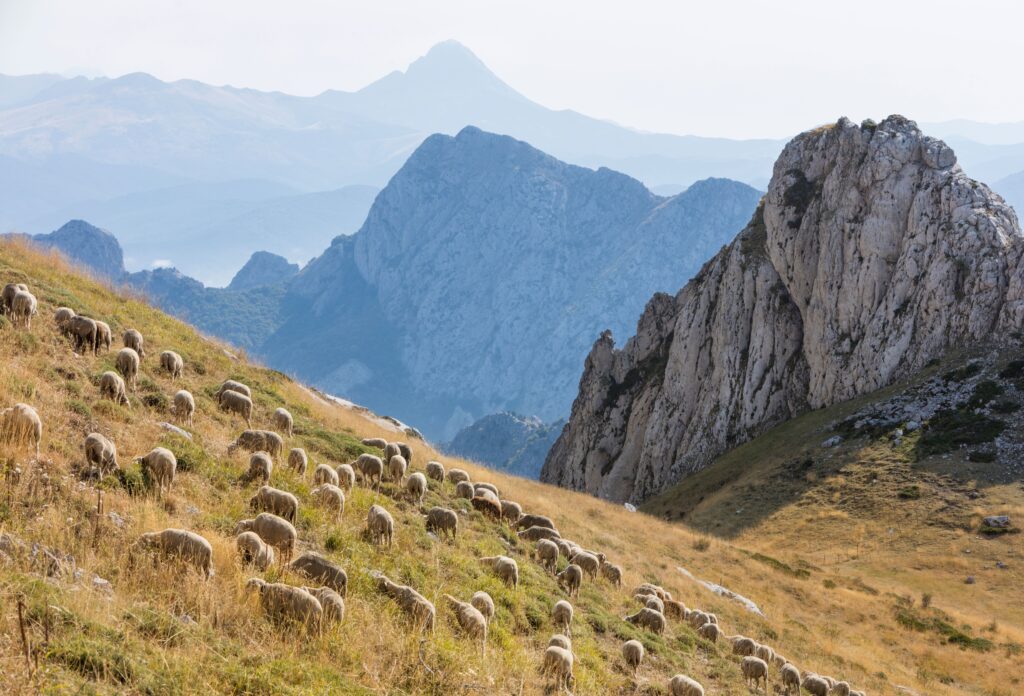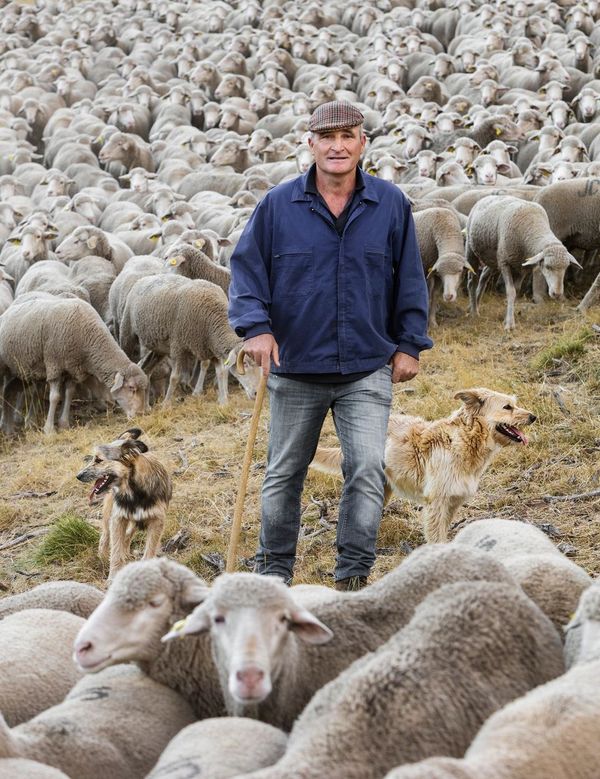“It’s a very tough journey; there’s water, there’s heat. I do it out of passion, because I’ve always done it and I don’t want it to be lost,” says Paco Morgado, who at 64 is returning to the road and will undertake the transhumance on foot with his flock of 1,440 Merino sheep. “Transhumance is an ancient tradition; it’s a traditional system for harnessing natural resources, what is now called a resilient form of production. At INTEROVIC, we support shepherds every year who continue to practice it as an example of the future of this production, thanks to the past of traditional systems,” explains Tomás Rodríguez, director of INTEROVIC, the Interprofessional Agri-Food Association for Sheep and Goat Meat.

Celebrate the Everyday with Lamb Campaign
As part of its European “Celebrate the Everyday with Lamb” campaign, the organization aims to highlight the importance of extensive livestock farming, which embodies culture, tradition, and rural life, and of transhumance, a form of pastoralism in constant movement, perhaps the livestock practice most closely linked to nature.
Highly relevant in history, anthropology, ethnography, and sociology, Spain is currently one of the few countries in the world where transhumance continues, primarily involving the Merino sheep, the most widespread in the world and originating in Spain. However, fewer and fewer shepherds are willing to move their flocks from the hot pastures of Extremadura to northern Spain in spring and summer, only to return in the fall.
Fewer and fewer shepherds are willing to move their flocks from the hot pastures of Extremadura to northern Spain in spring and summer, only to return in the fall.
Cada vez son menos los pastores que están dispuestos a trasladar en primavera y verano a sus rebaños desde las calurosas dehesas extremeñas hasta el norte de España para regresar en otoño
That’s why INTEROVIC aims to highlight and give voice to stories with names and surnames, such as those of shepherds Paco Morgado (64 years old), who has been shepherding all his life, and José Manuel Sánchez Miguel (45 years old), who this year will complete his third consecutive year as a transhumant shepherd. Both will follow practically the same route through the Cañada Leonesa Occidental (Puerto el Pico), a total of about 600 kilometers separating Trujillo (Cáceres) from the mountain passes where they will spend the summer near Riaño (in the Picos de Europa region of León). They estimate they will do so in about 40 days, in stages of 12-14 kilometers per day, depending primarily on the weather conditions, the condition of the roads, and the herd.
Their journey will pass through Cáceres and Toledo, where they will pass through towns like Oropesa, continue through Ávila, stopping in Arenas de San Pedro and Arévalo, then reach Valladolid, passing through Medina del Campo, Tordesillas, Medina de Rioseco, and Mayorga, among others. Finally, they will arrive in León via Burgo Ranero and end near Riaño, in León, each at a different port. They will stay there all summer with their sheep. They will probably return in the fall, again on foot.


The protagonists’ journey
The first to set out was José Manuel Sánchez Miguel, a shepherd from Huertas de Ánimas (Trujillo), who began the transhumance on foot through the Cañada Leonesa Occidental Puerto el Pico on May 14th, accompanied by his flock of 1,700 Merino sheep, “all of them native breed,” he proudly points out. He will also be accompanied by a donkey, a dozen dogs, 10 people, and a car with a trailer. The entire delegation will travel with him for approximately 40 days, covering more than 600 kilometers from Huerta de Ánimas (Cáceres) to Valverde de la Sierra, near Riaño, in the Picos de Europa mountains of León. They are expected to arrive between June 20 and 24, where he will settle in the same cabin that was his refuge last summer, in a rented mountain area with no boundaries, and will keep him constantly attentive to the sheep. “Although the journey is difficult, the trip will be worth it because the cattle return well-fed.”

Just a week later, on May 22, Paco Morgado left the Llanos de Cáceres and Sierra de Fuentes region, accompanied by his flock of 1,450 head. He also has the support of several shepherds and “a couple from Salamanca who live in Bilbao, whom I’ve known for years and who help me. They like the experience, but they come to work.” He also has eight mastiffs and three shepherds, and a car with a trailer that serves as support and is compartmentalized. “Food goes up top, half of the bottom is prepared to transport animals that get sick, the other half carries dog food, electric nets to enclose the livestock, water for dogs or for washing, blankets…” he explains.
Transhumance for farmers like Paco and José Manuel has many benefits: “The livestock eat very well along the way, our farm rests and regenerates, the cattle trail is enriched by the distribution of fertilizer and seeds by the herd.”
Paco, whose father was a shepherd, as well as his uncles and grandfather, believes he is a fifth-generation transhumant and has practiced shepherding since he was very young. At 18, he became responsible, and since 1994, he has had his own flock, he recalls. After transhumance on foot for about 25 years, he estimates that he will arrive around June 30th at his final destination, the La Uña mountain pass, north of León bordering Asturias. That is, “I will follow the same route as José Manuel to Prioro, then spend two more days passing through Riaño to reach the mountain pass. I will stay there until mid-September, when I will walk back to Extremadura.”
He believes that if all goes well, it will take about 40 days in total. “Before, we could have done it in 35 days. Today, the sheep are not as well prepared as they used to be, and the sheepfolds are not as clean as they used to be.” The reason that can delay you is that the sheep limp, perhaps due to humidity or stones on the path. This can affect 30 or 40 sheep at a time, and you have to reduce your working hours to avoid it,” he adds.
His dream is to recover activity, so that the paths of the Cañadas Reales (Royal Trails) can return to what they were before. “In transhumance, there has to be unity. I wish we weren’t just two flocks, but 20,” he emphasizes. But he acknowledges that it’s not an activity for everyone. “You have to like solitude. You have to go out with the flock all day, carry food, then corral the sheep, take care of the dogs, and make dinner. But life is comfortable; I enjoy it. Once I arrive at the port, I usually stay alone all summer, unless I need someone else to help me,” he explains.
Without a doubt, transhumance for farmers like Paco and José Manuel has many benefits. “The cattle do very well eating along the way, our farm rests and regenerates, the trail is enriched by the distribution of fertilizer and seeds by the herd as they pass, they eat sprouts and thus prevent fires,” they explain. But of course, “now we have only a few herds; before, we used to have about seven herds together, and I’ve experienced that myself. People don’t know how to do it and don’t want to practice it because they find it difficult. I don’t see it as so difficult; it’s a walk, we bring all the comforts, good blankets, food, and a tent,” notes Paco Morgado.
Commitment to Sustainability
In line with its new European campaign “Celebrate the everyday with lamb,” INTEROVIC highlights the environmental benefits of consuming lamb and goat meat, two of the most sustainable meats in the European Union. Their production in Spain, carried out on more than 110,000 sheep farms and 75,000 goat farms in rural areas, significantly contributes to the preservation of natural landscapes, improves soil fertility, and supports biodiversity. Furthermore, these rural farms are essential for economic development in areas that would otherwise be unable to be used for other agricultural purposes.
You might also be interested in
- La UNESCO declara la trashumancia, Patrimonio Cultural Inmaterial de la Humanidad
- La Fiesta de la Trashumancia regresa a las calles de Madrid
- Bestiarium. La trashumancia y sus efectos positivos sobre el medio ambiente
















